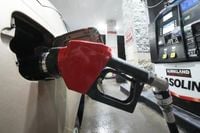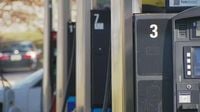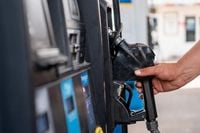Across the United States, drivers are catching a rare break at the pump. As of October 20, 2025, the national average price of gasoline has dropped below $3 a gallon—a threshold not seen since the early days of the COVID-19 pandemic and, more recently, since President Donald Trump returned to the White House in January. According to data from GasBuddy, the fuel savings platform, the national average now stands at $2.98 per gallon, a 4.1-cent decrease over the past week and a 19.3-cent drop from just a month ago. The median price is even lower at $2.82 per gallon, providing much-needed relief for millions of Americans feeling the pinch of inflation and economic uncertainty.
The story is similar in cities across the country. In Rockford, Illinois, drivers are seeing prices as low as $2.91 per gallon—the lowest since January 2024 and nearly 39 cents cheaper than this time last year, as reported by GasBuddy’s survey of 139 local stations. Baltimore motorists have also noticed a 9.2-cent decrease over the past week, with the average now at $2.96 per gallon. Miami, too, has experienced a 20-cent drop over the past month, while North Carolina saw prices fall by 11.1 cents just last week. Even in Montana, gas prices are 8.9 cents lower than in September.
What’s driving this nationwide decline? Industry experts point to a confluence of factors, with the most significant being the ramp-up in oil production by the Organization of the Petroleum Exporting Countries and its allies, known as OPEC+. Patrick De Haan, head of petroleum analysis at GasBuddy, credits OPEC+ for steadily raising oil output throughout 2025. "OPEC+ deserves much of the credit for this trend, having steadily raised oil production for much of 2025. Currently, 35 states have average gas prices below $2.99 per gallon, and GasBuddy even recorded the first $1.99 cash price at a station in Evans, Colorado, with stations in Oklahoma and Texas not far behind," De Haan stated in a news release.
OPEC+ members, led by Saudi Arabia, agreed to increase oil production by 137,000 barrels per day in October, with plans to continue this output into November. This surge in supply has contributed to oil prices slipping below $60 per barrel—a level not seen in recent years. According to GasBuddy, WTI crude was trading at $57.03 per barrel early Monday, while Brent crude hovered around $60.72 per barrel. The effect has been a cascade of lower prices at gas stations nationwide, with the most common price encountered by motorists standing at $2.89 per gallon and the cheapest prices found in states like Oklahoma ($2.45), Texas ($2.54), and Arkansas ($2.55).
Seasonal trends are also playing a role. Gas prices typically fall after the summer driving season ends, as Americans travel less and refineries switch to producing winter-blend gasoline, which is cheaper to make. "Prices have declined seasonally, as they always do, and thanks to OPEC continuing to raise oil production," De Haan told Newsweek. He also noted that the president has "limited control and in my view is not the primary reason if it happens," emphasizing that market forces and OPEC’s actions are the main drivers behind the drop.
Still, the White House has been quick to frame the decline as a win for its energy policy. In a statement, it said, "President Trump understands that energy dominance is a key driver for growing our economy and lowering costs — making good on a promise he repeatedly made on the campaign trail after years of Biden-induced economic disaster." Trump, who campaigned on the slogan "drill, baby, drill," promised to boost domestic energy production and lower gas prices, which had soared above $5 a gallon in 2022 during Joe Biden’s presidency. For Trump, cheaper gas is a tangible sign of progress. However, as De Haan and other analysts stress, the president’s influence is limited compared to global market dynamics.
For everyday Americans, the impact of falling gas prices is immediate and positive. With the holiday shopping season approaching, lower fuel costs are expected to give consumers more disposable income. As Becky Cook, a frequent driver, told WHTM, "We drive around a lot, so it’s nice to be able to pay less when we do fill up." Raymond James, an investment firm, projected that the savings at the pump "should provide a boost to consumer spending." De Haan echoed this sentiment, saying, "Gasoline prices are one of the key economic barometers that Americans use. If prices are high, they feel oppressed. If they decline or they are low, their sentiment or how they feel about the economy drastically improves."
Despite the good news, there are reasons for caution. The energy market remains volatile, and several factors could reverse the downward trend. De Haan warned that "all it takes is for things flare up in the Middle East or a refinery fire in the United States to send those prices back up." Indeed, last week’s small fire at BP’s Whiting, Indiana refinery caused a temporary spike in wholesale gasoline prices in the Great Lakes region. Trade tensions are another wild card; oil prices dipped after President Trump threatened China with new tariffs, but any escalation could quickly change the balance.
Diesel prices, while also falling, remain higher than gasoline. The national average for diesel is now $3.591 per gallon, down 3.7 cents from last week. Diesel is crucial for trucking and agriculture, so its price affects a broad swath of the economy. The lowest diesel prices are in Texas ($3.06), Oklahoma ($3.11), and Mississippi ($3.19), while the highest are in Hawaii ($5.13), California ($5.08), and Washington ($4.98).
Looking ahead, GasBuddy forecasts that the national average could dip into the $2.80s by year’s end, provided gasoline demand continues to ease and oil prices stay near multi-year lows. "Barring any major disruptions, gas prices are likely to remain slightly below year-ago levels and could stay under $3 for much of the next few months," De Haan predicted. However, he also cautioned that "the national average price of gasoline is very unlikely to fall below its 2021 levels anytime in 2025 or 2026 or potentially beyond."
Amid the economic uncertainty, some experts note that data gaps—caused in part by government shutdowns—make it harder to forecast the future. Melissa Cohn, regional vice president of William Raveis Mortgage, told Newsweek, "We’re living in a data void" that complicates decision-making for everyone from the Federal Reserve to energy analysts.
For now, though, American drivers can enjoy a little extra cash in their wallets. As prices at the pump hit multi-year lows, the ripple effects are already being felt in consumer sentiment and spending. Whether these savings will last through the winter—or are just a fleeting reprieve—remains to be seen, but for millions, the relief couldn’t come at a better time.


